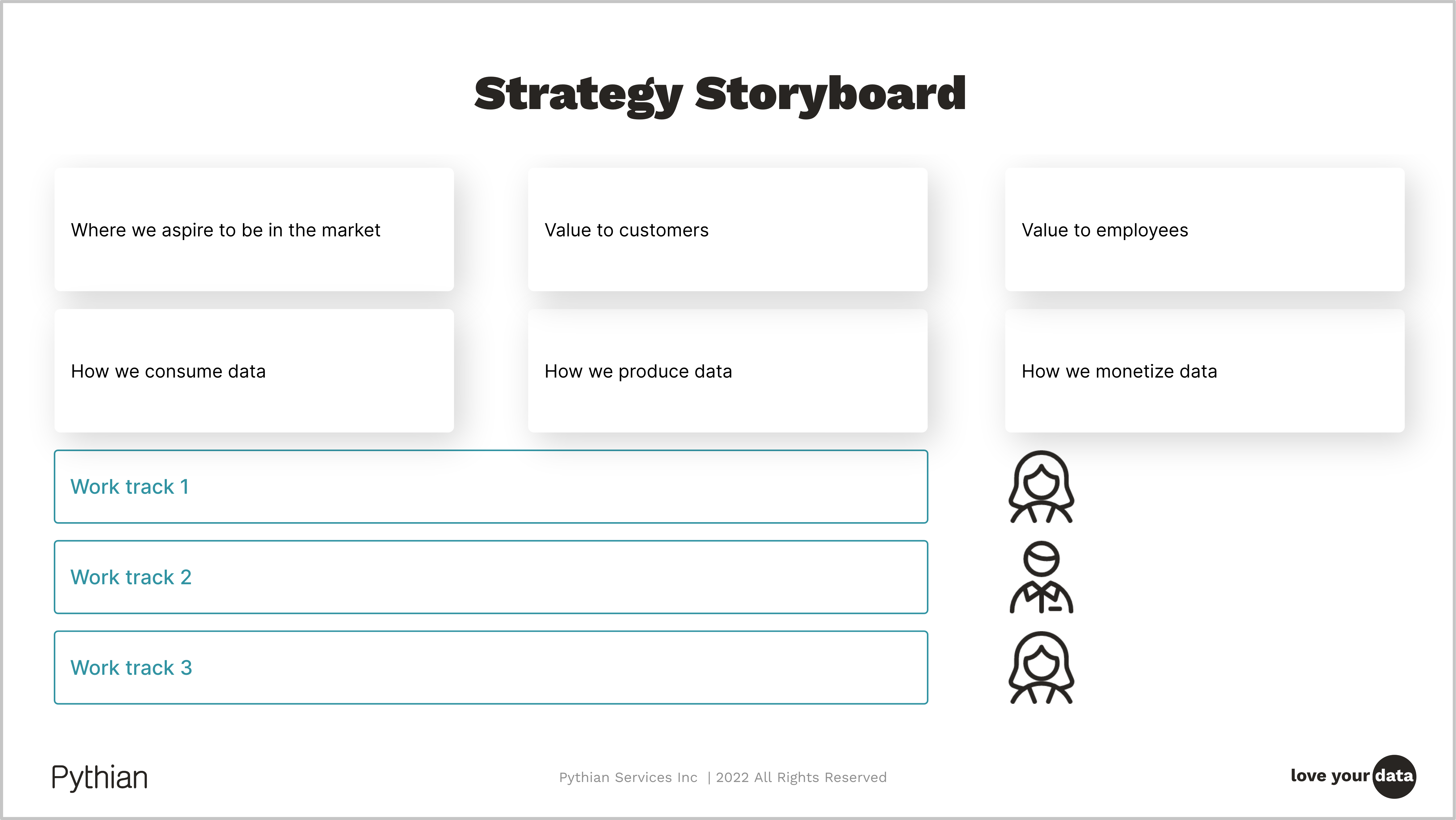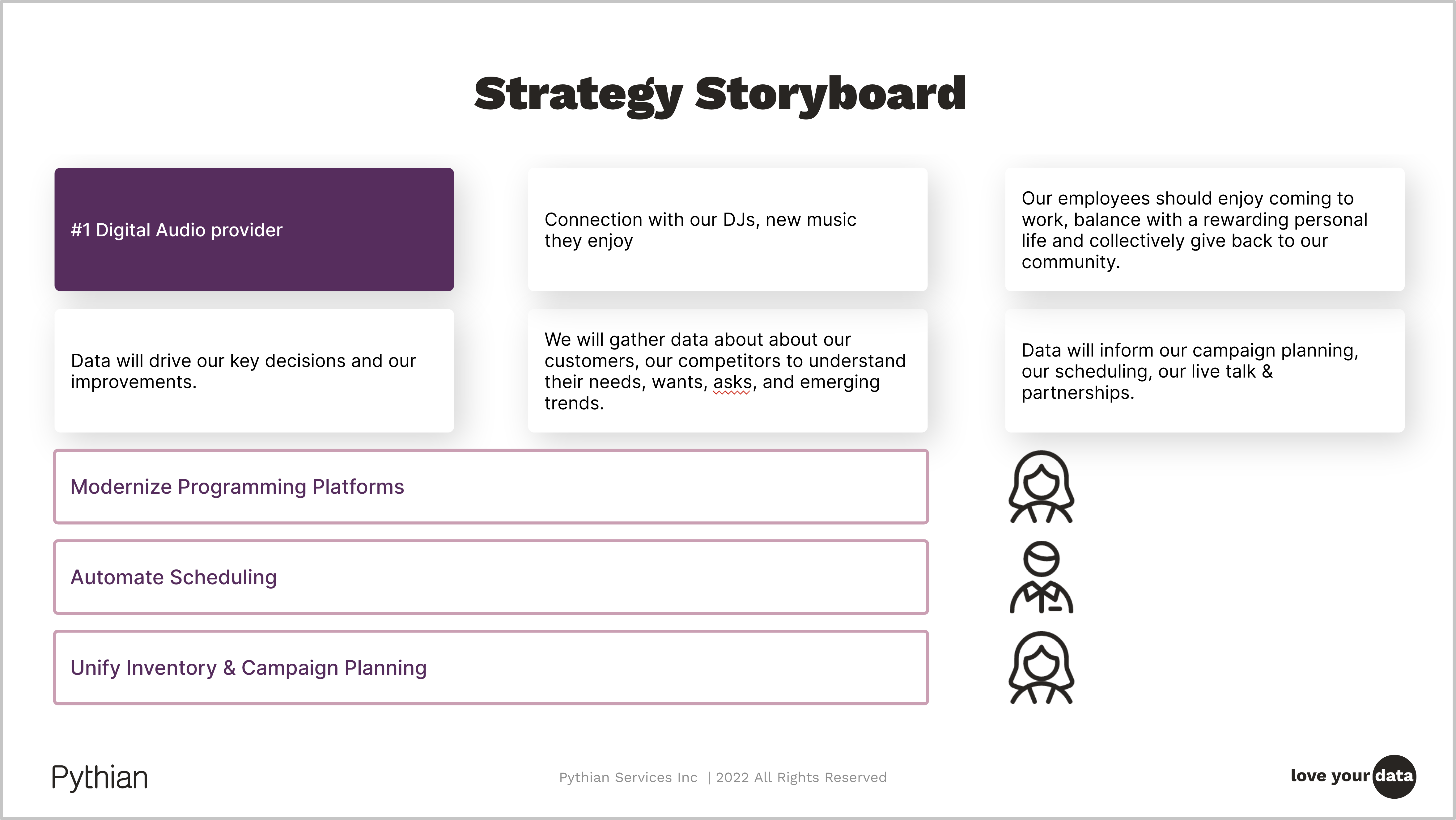Creating your Strategy Storyboard
In our previous post we explored how to inventory existing data assets as a baseline for understanding what assets we have available to influence our data strategy and accelerate its execution. This baseline allows us to quickly identify immediate use cases of value with minimal investment to deploy, building a foundation for future use cases of advanced capabilities.
Our data strategy will drive alignment and successful execution in parallel across disparate organizations. This alignment comes from a shared set of outcomes, priorities and measures. Our data strategy storyboard will become the manifestation of these decisions and communicate them to the organization. This data strategy storyboard becomes our primary asset to communicate our data strategy across the organization and ensure that use cases, technology and risk are prioritized and managed in similar ways.
Our strategy storyboard has three primary components:
- First, being the value of our data programs and the measures of success across internal and external dimensions.
- Second, we document out data we leverage across the organization, and identify key areas of value creation and consumption.
- Third, we document top level work-streams needed to realize the aspirations documented in the first two categories.
The example below is a common framework to capture these elements in an organized and easy to read format.

Often times it helps to look at the standard format, then begin to look at examples of how this manifests in real world scenarios. The below example looks at a fictitious global media company, focused on audio content delivery. They look at their data strategy as a means to maintain a close connection between their on-air personalities and listeners. They look to their data strategy to drive connections, operational improvements and access to data for planning future content. These objectives then become key work-tracks to build new capabilities across established systems.

With the identification of key work-tracks, we can begin to decompose our work into specific use cases that have defined personas, value measures and timelines. Beginning with data we know is available, we can influence the use cases to focus on and prioritize the low effort work that will move our data strategy execution forward.
Your data strategy storyboard should be the first asset produced by the executive and working teams building your data strategy. This important asset aligns the organization on the objectives and outcomes while identifying early tracks of work with identified accountable executives.
In our next post we will dig into the lead canvas and how to document specific details relating to our prioritized use cases. These assets will allow our organization to develop roll out plans that drive adoption of new capabilities and successful organizational transformation.
On this page
Share this
Share this
More resources
Learn more about Pythian by reading the following blogs and articles.
ORA-00274 after upgrade to 19c and trying to enable a delay on recovery for standby database.


ORA-00274 after upgrade to 19c and trying to enable a delay on recovery for standby database.
Sep 26, 2022 12:00:00 AM
1
min read
Data Strategy & Digital Transformation


Data Strategy & Digital Transformation
Jan 12, 2023 12:00:00 AM
2
min read
Python: Using Dataclasses to Model Your Data


Python: Using Dataclasses to Model Your Data
Oct 7, 2021 12:00:00 AM
2
min read
Ready to unlock value from your data?
With Pythian, you can accomplish your data transformation goals and more.
